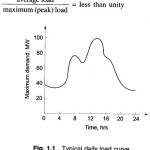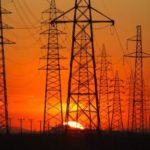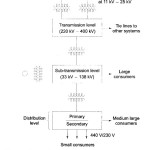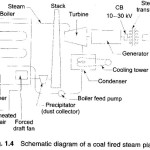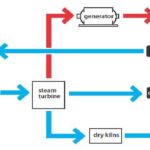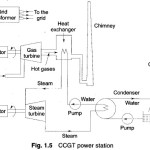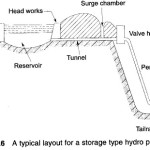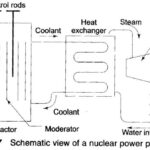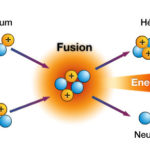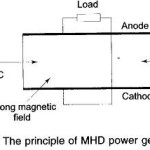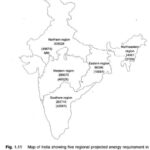Introduction to Modern Power System Articles:
Introduction to Modern Power System Planning: In Modern Power System Planning, electric energy is an essential ingredient for the industrial and all-round development of any country. It is a coveted form of energy, because it can be generated centrally in bulk … (Read More)
Diversity Factor in Power System: Diversity Factor in Power System is defined as the sum of individual maximum demands on the consumers, divided by the maximum load on the system. This factor gives the time diversification of the load and is … (Read More)
Load Forecasting Techniques in Power System: As power plant planning and construction require a gestation period of four to eight years or even longer for the present day super power stations, energy and load demand forecasting plays a crucial role in … (Read More)
Structure of Power Systems: Generating stations, transmission lines and the distribution systems are the main components of an electric power system. Generating stations and a distribution system are connected through transmission lines, which also connect one … (Read More)
Thermal Power Station | Coal Based Thermal Power Plant: The heat released during the combustion of coal, oil or gas is used in a boiler to raise steam. In India heat generation is mostly coal based except in small sizes, because … (Read More)
Cogeneration Power Plant | Topping and Bottoming Cycle in Cogeneration: Considering the tremendous amount of waste heat generated in thermal power generation, it is advisable to save fuel by the simultaneous generation of electricity and steam (or hot water) for industrial … (Read More)
Working Principle of Combined Cycle Gas Turbine Power Plant: With increasing availability of natural gas (methane) (recent finds in Bangladesh) prime movers based on Gas Turbines have been developed on the lines similar to those used in aircraft. Gas combustion generates … (Read More)
Working Principle of Hydroelectric Power Plant: The oldest and cheapest method of Working Principle of Hydroelectric Power Plant is that of utilizing the potential energy of water. The energy is obtained almost free of running cost and is completely pollution free. … (Read More)
Nuclear Power Plant Diagram: With the end of coal reserves in sight in the not too distant future, the immediate practical alternative source of large scale electric energy generation is nuclear energy. In fact, the developed … (Read More)
Working of Fusion Technology in Energy: Fusion Technology in Energy is produced in this process by the combination of two light nuclei to form a single heavier one under sustained conditions of extremely high temperatures (in millions of degree centigrade). Fusion is … (Read More)
MHD Generator Working Principle: In thermal generation of electric energy, the heat released by the fuel is converted to rotational mechanical energy by means of a thermocycle. The Modern Power System Analysis mechanical energy is then used to rotate the electric generator. … (Read More)
Different types of Renewable Energy: To protect environment and for sustainable development, the importance of Different types of Renewable Energy cannot be overemphasized. It is an established and accepted fact that Renewable Energy Sources and non-conventional forms of energy will play … (Read More)
Energy Storage Materials: There is a lot of problem in storing electricity in large quantities. Energy Storage Materials which can be converted into electricity can be stored in a number of ways. Storage of any nature is however very costly and … (Read More)
Power Systems Growth: India is fairly rich in natural resources like coal and lignite; while some oil reserves have been discovered so far, intense exploration is being undertaken in various regions of the country. India has immense … (Read More)
Energy Conservation Methods: Energy Conservation Methods is the cheapest new source of energy. We should resort to various conservation measures such as cogeneration (discussed earlier), and use energy efficient motors to avoid wasteful electric uses. We can achieve considerable electrical power … (Read More)
Deregulation Meaning: For over one hundred years, the electric power industry worldwide operated as a regulated industry. In any area there was only one company or government agency (mostly state-owned) that produced, transmitted, distributed and sold electric power and services. Deregulation … (Read More)
Distributed and Dispersed Generation: Distributed Generation (DG) using many small generators of 2-50 MW output, installed at various strategic points throughout the area, so that each provides power to a small number of consumers nearby. These may be solar, mini/micro hydel … (Read More)
Environmental Aspects Of Generation of Electrical Energy: Conversion of one form of energy or another to electrical form has unwanted side effects and the pollutants generated in the process have to be disposed off. Pollutants know no geographical boundary, as result … (Read More)
Electric and Magnetic Fields from Overhead Lines: Biological effects of Electric and Magnetic Fields from Overhead Lines and even cables in close proximity of buildings have recently attracted attention and have also caused some concern. Power frequency (50 or 60 Hz) … (Read More)
What is Power System Engineering?: The Power System Engineering of the first decade of the twenty-first century has to face a variety of challenging tasks, which he can meet only by keeping abreast of the recent scientific advances and the latest … (Read More)
Uses of Computer and Microprocessor: The first methods for solving various power system problems were AC and DC network analyzers developed in early 1930s. AC analyzers were used for load flow and stability studies whereas … (Read More)
Problems of Power Sector in India: The electricity requirements of power sector in India have grown tremendously and the demand has been running ahead of supply. Electricity generation and transmission processes in India are very inefficient in comparison with those of … (Read More)
